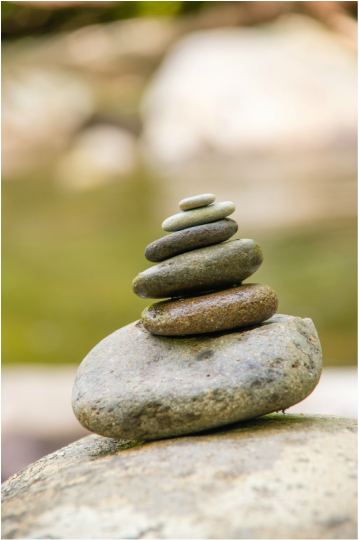Between Stockholm Syndrome and Lima Syndrome
Part 31: The Intersection of Religion and Martial Arts

The true kinship between Zen and the martial arts lies in the fact that both can lead us toward the spirit of the way: because any conflict, whether it takes place within the body and mind or outside them, is always a battle against the self.
-TAISEN DESHIMARU (1914-1982)
Last week in Part 30 (The Source of Violence in Religion), we have explored how even Jesus' Sermon on The Mount as well as Islam's literal meaning of submission, surrender, peace or safety have failed to curb sectarian violence and religious wars for centuries. As outlined in Part 10 (The Pope who would have Burned his own Father), we need look no further than the Middle East—the cradle of human civilization and great monotheist Abrahamic religions (Judaism, Christianity, and Islam). It has been a hot spot plagued by sectarian violence, bloody territorial disputes, protracted wars, and suicidal nihilism since the end of World War II. Somehow the eschatology of Abrahamic religions have generated unintended violent consequences.
Now let's explore how Zen Buddhism*, a nontheist religion, has its own unintended consequences, though in an entirely different direction. (First and foremost, though I have some interest in Zen Buddhism, my knowledge is quite basic. There are many excellent books about Zen Buddhism for those who want to explore further. The following is not a crash course in Zen Buddhism by any stretch of the imagination, much less an effort to proselytize anyone.)
"The prophet is without honor in his own land," Jesus once said. In 520 A.D. a Buddhist monk (not necessarily a prophet, but widely acknowledged as the first patriarch of Chan Buddhism), Bodhidharma (448-527), journeyed from India to China to spread Buddhism, and settled at a monastery called Shao Lin (“Little Forest”). In those days, it was common for Indian Buddhist monks to travel to China where their Buddhist teachings were better received than in India, a Hindu stronghold. Although Buddhism was born in India, it had found a more nurturing environment in China for 3 (three) reasons. First, Buddhism’s temporal orientation in the present life—no promise of afterlife whatsoever—has never been quite compatible with that of Hinduism, which strongly believes in the rebirth and reincarnation of souls in afterlife. Whereas Buddhism accepts death at face value, Hinduism regards death merely as a temporary cessation of the physical body.
Second, there was an issue of linguistic incompatibility as explained by Alan Watts (1915-1973), a respected authority on the Judeo-Christian traditions, as well as an expert author of many books on Zen Buddhism and Taoism. Indian Buddhism did not translate well into the Chinese culture—then already a solid 2000-year old civilization under the influence of both nontheist Taoism and Confucianism. Recorded in Sanskrit, Indian Buddhism was abstract, speculative, poetic, philosophical, and metaphysical. On the other hand, the Chinese language is extremely practical, prosaic, and concrete as it is based on logograms (symbols that represent words or phrases) instead of phonemes (units of syllables within a word).
Third, in China, Buddhism found the perfect match made in heaven. The Chinese native philosophy of Taoism—which stresses the principle of yin and yang, living in harmony with nature and the Tao ("universal way")—has always shared Buddhism’ temporal orientation in the present life and nonchalant standpoint in afterlife. (Taoism classic text, Tao Te Ching, written more than 2500 years ago by Lao Tzu, is the second most translated book in the world after the Bible.) Indian Buddhism better compatibility with Chinese Taoism facilitated the amalgamation and syncretism between the two religions to become a kind of "hybrid" called Chan Buddhism in China, which eventually became Zen Buddhism in Japan. As the most secular among all branches in Buddhism, Zen Buddhism is not merely a philosophy; it became the spiritual foundation and creative force for Japanese arts of painting, landscaping, flower arrangement, poetry, calligraphy, tea ceremony, architecture, swordsmanship and martial arts like karate, judo, aikido, kendo, etcetera. But I'm getting ahead of myself here.
When Bodhidharma settled down at the Shao Lin monastery in the sixth century, he was disappointed to discover the monks were quite weak and unable to withstand the austere ways of Buddhism—a frugal lifestyle consisting of extended periods of fasting. According to legend, he then retired into a cave and after nine uninterrupted years of meditation facing a blank wall, he devised a set of physical exercises for the monks. Some of the exercises included yoga-like asanas and were intended to regulate and strengthen the monks' prana or chi (or qi) flow in order to improve their health and stamina.
These exercises were proven to be so beneficial that Bodhidharma's chi kung or qi gong exercises of holistic system which coordinate body posture, movement, breathing techniques, and meditation are still practiced today for health, spirituality, and martial arts training. Bodhidharma exercises formed the building blocks for Shao Lin Chinese martial arts developed by Buddhist monks to defend themselves from lawlessness due to endless civil wars. While in China, it evolved into kung fu, kuntao, and jeet kune do (popularized by Bruce Lee); in Japan, it evolved into karate, judo, aikido, and ju-jitsu; and in Korea, it evolved into hwarangdo, hapkido, and taekwondo.
Thus we arrive at the intersection of religion and martial arts, which is not only interesting, but quite revealing. Just juxtapose (a) the violence in religion with (b) the spirituality and pacifism of martial arts, and we may learn more than we bargained for about the eschatology of Abrahamic religions. If only we are willing to learn…
* Zen Buddhism, an offshoot of Mahayana Buddhism in Japan, should not be confused with the main three branches of Buddhism: (1) Theravada, mostly practiced in Myanmar, Thailand, Vietnam, Cambodia and Sri Lanka; (2) Mahayana, mostly practiced in China, Japan, and Korea; and (3) Vajrayana or Tantric Buddhism mostly practiced in Tibet and Mongolia.
[To be continued.]
Johannes Tan, Indonesian Translator & Conference Interpreter
-TAISEN DESHIMARU (1914-1982)
Last week in Part 30 (The Source of Violence in Religion), we have explored how even Jesus' Sermon on The Mount as well as Islam's literal meaning of submission, surrender, peace or safety have failed to curb sectarian violence and religious wars for centuries. As outlined in Part 10 (The Pope who would have Burned his own Father), we need look no further than the Middle East—the cradle of human civilization and great monotheist Abrahamic religions (Judaism, Christianity, and Islam). It has been a hot spot plagued by sectarian violence, bloody territorial disputes, protracted wars, and suicidal nihilism since the end of World War II. Somehow the eschatology of Abrahamic religions have generated unintended violent consequences.
Now let's explore how Zen Buddhism*, a nontheist religion, has its own unintended consequences, though in an entirely different direction. (First and foremost, though I have some interest in Zen Buddhism, my knowledge is quite basic. There are many excellent books about Zen Buddhism for those who want to explore further. The following is not a crash course in Zen Buddhism by any stretch of the imagination, much less an effort to proselytize anyone.)
"The prophet is without honor in his own land," Jesus once said. In 520 A.D. a Buddhist monk (not necessarily a prophet, but widely acknowledged as the first patriarch of Chan Buddhism), Bodhidharma (448-527), journeyed from India to China to spread Buddhism, and settled at a monastery called Shao Lin (“Little Forest”). In those days, it was common for Indian Buddhist monks to travel to China where their Buddhist teachings were better received than in India, a Hindu stronghold. Although Buddhism was born in India, it had found a more nurturing environment in China for 3 (three) reasons. First, Buddhism’s temporal orientation in the present life—no promise of afterlife whatsoever—has never been quite compatible with that of Hinduism, which strongly believes in the rebirth and reincarnation of souls in afterlife. Whereas Buddhism accepts death at face value, Hinduism regards death merely as a temporary cessation of the physical body.
Second, there was an issue of linguistic incompatibility as explained by Alan Watts (1915-1973), a respected authority on the Judeo-Christian traditions, as well as an expert author of many books on Zen Buddhism and Taoism. Indian Buddhism did not translate well into the Chinese culture—then already a solid 2000-year old civilization under the influence of both nontheist Taoism and Confucianism. Recorded in Sanskrit, Indian Buddhism was abstract, speculative, poetic, philosophical, and metaphysical. On the other hand, the Chinese language is extremely practical, prosaic, and concrete as it is based on logograms (symbols that represent words or phrases) instead of phonemes (units of syllables within a word).
Third, in China, Buddhism found the perfect match made in heaven. The Chinese native philosophy of Taoism—which stresses the principle of yin and yang, living in harmony with nature and the Tao ("universal way")—has always shared Buddhism’ temporal orientation in the present life and nonchalant standpoint in afterlife. (Taoism classic text, Tao Te Ching, written more than 2500 years ago by Lao Tzu, is the second most translated book in the world after the Bible.) Indian Buddhism better compatibility with Chinese Taoism facilitated the amalgamation and syncretism between the two religions to become a kind of "hybrid" called Chan Buddhism in China, which eventually became Zen Buddhism in Japan. As the most secular among all branches in Buddhism, Zen Buddhism is not merely a philosophy; it became the spiritual foundation and creative force for Japanese arts of painting, landscaping, flower arrangement, poetry, calligraphy, tea ceremony, architecture, swordsmanship and martial arts like karate, judo, aikido, kendo, etcetera. But I'm getting ahead of myself here.
When Bodhidharma settled down at the Shao Lin monastery in the sixth century, he was disappointed to discover the monks were quite weak and unable to withstand the austere ways of Buddhism—a frugal lifestyle consisting of extended periods of fasting. According to legend, he then retired into a cave and after nine uninterrupted years of meditation facing a blank wall, he devised a set of physical exercises for the monks. Some of the exercises included yoga-like asanas and were intended to regulate and strengthen the monks' prana or chi (or qi) flow in order to improve their health and stamina.
These exercises were proven to be so beneficial that Bodhidharma's chi kung or qi gong exercises of holistic system which coordinate body posture, movement, breathing techniques, and meditation are still practiced today for health, spirituality, and martial arts training. Bodhidharma exercises formed the building blocks for Shao Lin Chinese martial arts developed by Buddhist monks to defend themselves from lawlessness due to endless civil wars. While in China, it evolved into kung fu, kuntao, and jeet kune do (popularized by Bruce Lee); in Japan, it evolved into karate, judo, aikido, and ju-jitsu; and in Korea, it evolved into hwarangdo, hapkido, and taekwondo.
Thus we arrive at the intersection of religion and martial arts, which is not only interesting, but quite revealing. Just juxtapose (a) the violence in religion with (b) the spirituality and pacifism of martial arts, and we may learn more than we bargained for about the eschatology of Abrahamic religions. If only we are willing to learn…
* Zen Buddhism, an offshoot of Mahayana Buddhism in Japan, should not be confused with the main three branches of Buddhism: (1) Theravada, mostly practiced in Myanmar, Thailand, Vietnam, Cambodia and Sri Lanka; (2) Mahayana, mostly practiced in China, Japan, and Korea; and (3) Vajrayana or Tantric Buddhism mostly practiced in Tibet and Mongolia.
[To be continued.]
Johannes Tan, Indonesian Translator & Conference Interpreter

 RSS Feed
RSS Feed